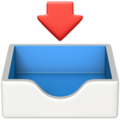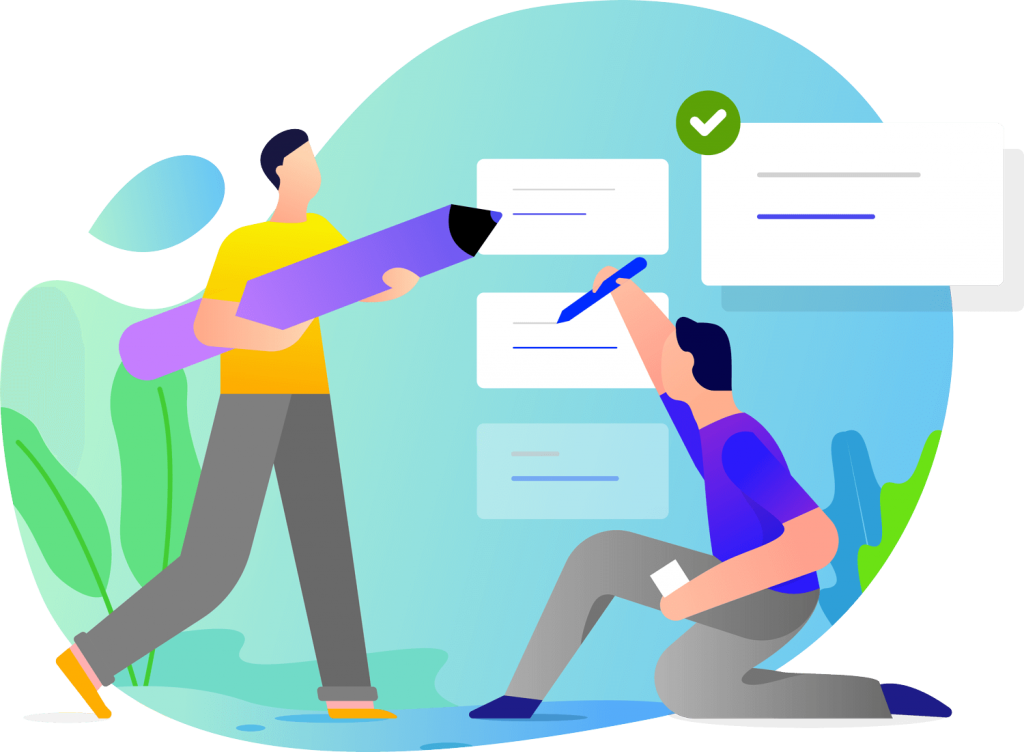Welcome to our blog, where we explore the key aspects of web design and their impact on improving bounce rates. In today’s digital age, retaining users on your website is crucial for success. In this article, we will delve into the concept of bounce rate, understanding its significance, and uncovering effective strategies to improve it through well-crafted web design. Join us as we unlock the secrets to keeping visitors engaged, reducing bounce rates, and ultimately driving better conversions. Let’s dive in!



Table of Contents
Toggle1. Understanding Bounce Rate: A Key Metric for Web Design Success
Measuring user engagement is crucial for the success of any website, and bounce rate is a key metric that provides valuable insights into user behavior and web design effectiveness. Bounce rate refers to the percentage of visitors who leave a website after viewing only one page. It is an indicative measure of how engaging and relevant your web content is to your target audience.
Understanding bounce rate is essential because it helps you identify potential issues with your website and make informed design decisions to improve user experience. Here are a few reasons why it’s important:
- Indicates content relevance: A high bounce rate may suggest that your website’s content is not aligning with what visitors are expecting. By analyzing the pages with the highest bounce rates, you can identify areas of improvement, such as optimizing headlines, improving clarity of the content, and enhancing visual appeal to better capture and retain user interest.
- Highlights user experience issues: A high bounce rate can also indicate UX issues like slow loading speed, confusing navigation, or an overwhelming layout that overwhelms visitors. By monitoring the bounce rate, you can pinpoint these issues and take steps to improve the overall user experience, such as optimizing page loading time, simplifying navigation menus, and implementing a responsive design.
With a comprehensive understanding of bounce rate and its implications, you can effectively evaluate your website’s performance, make data-driven decisions, and refine your web design to increase user engagement and achieve greater success.
2. The Link Between Web Design and Bounce Rate: Unveiling the Connection
When it comes to designing a successful website, many factors come into play. However, one aspect that often goes unnoticed is the impact of web design on bounce rate. Bounce rate refers to the percentage of visitors who navigate away from your site after viewing only one page. Understanding the link between web design and bounce rate is crucial for optimizing user experience and driving conversions.
A well-designed website can significantly reduce bounce rate and keep visitors engaged, ultimately leading to higher conversions. Here are a few ways in which web design can impact bounce rate:
- Responsive and mobile-friendly: In today’s digital age, an increasing number of users access websites via mobile devices. A responsive design that adapts seamlessly to different screen sizes ensures a positive user experience, reducing the likelihood of visitors bouncing off.
- Intuitive navigation: A cluttered and confusing navigation system can frustrate users and drive them away. Designing a clean and intuitive navigation menu enables visitors to easily find the information they need, encouraging them to explore further.
- Page loading speed: Slow-loading pages are a major turnoff for users. Optimizing your website’s loading speed by compressing images, minifying CSS and JavaScript, and leveraging caching techniques can greatly improve the user experience, decreasing the chances of users bouncing.
A captivating web design that focuses on these factors not only enhances user satisfaction but also encourages prolonged engagement. By creating an aesthetically pleasing and user-friendly website, you can build trust, retain visitors, and ultimately, boost your conversion rates.
3. Practical Tips to Lower Bounce Rate Through Effective Web Design
Whether you are a seasoned web designer or just starting out, reducing the bounce rate of your website is crucial for optimizing user experience and increasing conversions. Here are some practical tips that can help you lower the bounce rate through effective web design:
Improving website loading speed:
- Optimize images: Compress and resize images to ensure they don’t slow down your website. Use tools like Photoshop or online image compressors for optimal results.
- Minify code: Minimizing HTML, CSS, and JavaScript files can significantly improve loading speed. Consider using minification tools or plugins to remove unnecessary characters and spaces from your code.
- Enable browser caching: By configuring caching headers, you can enable browsers to store static files like CSS and JavaScript, reducing load times for returning visitors.
Enhancing website navigation and layout:
- Simplify navigation: Ensure your website navigation is intuitive and user-friendly, allowing visitors to find what they need with ease. Use clear labels, dropdown menus, and uncluttered designs to guide users.
- Make content scannable: Break your content into smaller paragraphs, use headings, and incorporate bullet points when appropriate. Highlight important information using bold or italics to improve readability and make the content more engaging.
- Optimize for mobile devices: With mobile usage on the rise, it’s crucial to ensure your website is responsive and provides an optimal experience on various devices. Test your site’s responsiveness across different screen sizes and consider implementing a mobile-first design approach.
By implementing these practical tips, you can effectively reduce bounce rates and create a seamless user experience. Remember, a well-designed website not only engages visitors but also encourages them to explore further, ultimately leading to higher conversions and success in your online endeavors.
4. Enhancing User Engagement: How Web Design Elements Influence Bounce Rate
In today’s fast-paced digital world, capturing and retaining the attention of users has become more challenging than ever before. Bounce rate – the percentage of visitors who leave a website after viewing only one page – is a key metric that indicates whether users are engaged or not. When it comes to enhancing user engagement, web design elements play a crucial role in influencing the bounce rate. From visual aesthetics to navigation, every aspect of your website design can either captivate or deter your audience. So, let’s dive deeper into the world of web design and explore how you can leverage its elements to keep users hooked.
First and foremost, an attractive and visually appealing website design is an absolute must. Utilizing eye-catching graphics and high-quality images can grab your users’ attention, enticing them to stay longer on your site and explore further. Moreover, incorporating a balanced color scheme and clean layout ensures that the design is visually pleasing and easy to navigate. Remember, cluttered and confusing designs often drive users away. In addition, it’s essential to prioritize responsive web design, ensuring that your website optimally adapts to various screen sizes, including mobile devices. By embracing responsive design, you provide a seamless and enjoyable browsing experience for users, reducing the likelihood of them bouncing from your site.
Secondly, effective placement of call-to-actions (CTAs) throughout your website can significantly impact user engagement. Strategically positioning buttons and links can guide users towards desired actions, such as signing up for a newsletter, making a purchase, or exploring related content. Incorporating persuasive language and using contrasting colors for CTAs can grab users’ attention and prompt them to take action. Additionally, employing interactive elements like sliders, carousels, or videos can enrich the user experience, encouraging users to stay longer and explore more of your site. By carefully selecting and implementing these web design elements, you can optimize user engagement and ultimately reduce bounce rates. Remember, a truly engaging website design goes beyond just aesthetics – it’s about creating an intuitive and immersive user experience that keeps your audience coming back for more.
5. Proven Strategies to Optimize Web Design and Reduce Bounce Rate
Creating a visually appealing and user-friendly website is crucial for reducing bounce rates and increasing user engagement. Here are some proven strategies to optimize web design and keep your visitors hooked:
Streamline Navigation: A well-structured navigation menu is essential for helping users find what they’re looking for quickly. Utilize a clear and intuitive menu structure, ensuring that each page is easily accessible within a few clicks. Consider implementing drop-down menus or a sticky navigation bar to enhance user experience and encourage exploration.
Utilize Responsive Design: In today’s mobile-dominated world, having a responsive website is paramount. Ensure your web design is fully optimized for all devices, including smartphones and tablets. Responsive design not only improves user experience but also helps with search engine rankings, as search engines prioritize mobile-friendly websites. Remember to consider size and readability of fonts, placement of buttons, and overall visual appeal across different screen sizes.
Optimize Page Loading Speed: Slow-loading websites are a major turn-off for users, often leading to high bounce rates. Optimize your web design by minimizing the size of images and using compressed files whenever possible. Additionally, enable browser caching and leverage content delivery networks (CDNs) to ensure swift loading times. A fast and efficient website will not only keep visitors engaged but also improve your search engine rankings.
Highlight Call-to-Actions (CTAs): Implement eye-catching and strategically placed CTAs throughout your website to guide users towards desired actions. Use contrasting colors, bold text, or buttons to make CTAs stand out. Whether it’s signing up for a newsletter or making a purchase, strong CTAs create a sense of urgency and encourage visitors to take the desired actions.
Optimize for Search Engines: Incorporate search engine optimization (SEO) techniques into your web design to improve visibility on search engine result pages. Conduct keyword research and strategically place relevant keywords in your website’s meta tags, headings, and content. Additionally, ensure your site’s structure is SEO-friendly, utilizing proper HTML tags, descriptive URLs, and implementing alt tags for images. A well-optimized website is more likely to attract organic traffic and reduce bounce rates.
By implementing these tried-and-true strategies, you can optimize your web design and create a website that captivates visitors, minimizes bounce rates, and ultimately drives success for your online business. Remember, a visually appealing, user-friendly, and well-optimized website is the key to achieving your online goals.
Q&A
Q: What is bounce rate and why is it important for a website?
A: Bounce rate refers to the percentage of site visitors who navigate away from a webpage after viewing only a single page. It is an important metric because it can provide valuable insights into user engagement and the effectiveness of a website’s design.
Q: How does bounce rate impact a website’s success?
A: A high bounce rate can indicate that visitors are not finding what they are looking for or that the website is not meeting their expectations. This can lead to missed opportunities for conversion, reduced engagement, and ultimately, a negative impact on the website’s success.
Q: How does web design influence bounce rate?
A: Web design plays a crucial role in reducing bounce rate by ensuring a positive user experience. Elements such as intuitive navigation, responsive design, well-organized content, visually appealing visuals, and fast-loading pages can all contribute to keeping visitors engaged and encourage them to explore further.
Q: What are some common web design mistakes that can increase bounce rate?
A: Some common web design mistakes that can contribute to a high bounce rate include cluttered layouts, confusing navigation, slow loading times, intrusive advertisements, poor mobile optimization, and lack of relevant, high-quality content.
Q: How can optimizing web design elements improve bounce rate?
A: By optimizing web design elements, you can create a more user-friendly and engaging website that encourages visitors to stay longer and explore more. This can be achieved through thoughtful planning, user research, usability testing, and continuous monitoring and improvement.
Q: Can you provide some examples of effective web design strategies to reduce bounce rate?
A: Sure! Effective strategies include keeping the website clean and streamlined, using clear calls-to-action, improving page load times, optimizing for mobile devices, making content easy to scan, utilizing white space effectively, and ensuring consistent branding throughout the site.
Q: Is it possible to measure the impact of web design changes on bounce rate?
A: Yes, it is possible to measure the impact of web design changes on bounce rate using analytics tools. By comparing bounce rates before and after implementing design changes, you can determine the effectiveness of the modifications and make data-driven decisions.
Q: How can A/B testing help in improving bounce rate through web design iterations?
A: A/B testing involves creating two or more versions of a webpage with distinct design elements and randomly directing users to each version. By analyzing the bounce rates of these different versions, you can identify which design elements perform better and make iterative improvements based on the results.
Q: Is there a ”one-size-fits-all” solution to improving bounce rate through web design?
A: No, there is no universal solution as each website and its audience are unique. However, by understanding user behavior, conducting research, and implementing best practices, you can significantly improve bounce rates and enhance the overall user experience on your website. In conclusion, it is undeniable that web design has a critical impact on bounce rate, and by extension, the success of a website. A high bounce rate can greatly hinder the achievement of important business goals, such as lead generation and conversion rates. By prioritizing a user-centric approach and implementing effective design strategies, website owners can significantly reduce bounce rates and ensure a more engaging online experience for their visitors.
To improve bounce rate, it is essential to create a visually appealing and intuitive design that seamlessly guides users through the website. Incorporating responsive design elements and optimizing page loading speed are also vital in maintaining user interest and reducing the likelihood of abandonment. Furthermore, implementing appropriate calls-to-action at strategic points can capture users’ attention and invite them to explore further, ultimately contributing to a lower bounce rate.
Moreover, it is crucial to regularly analyze and refine website design based on user behavior and feedback. By leveraging tools such as heatmaps, session recordings, and user surveys, website owners can gain valuable insights into user preferences and pain points. This data-driven approach allows for continuous improvements and ensures that a website remains optimized to meet user expectations, thereby reducing bounce rates.
Lastly, the value of investing in professional web design expertise cannot be overstated. Collaboration with experienced designers who understand the nuances of user behavior can make a significant difference in creating a captivating and effective website. Designers can provide valuable insights, implement best practices, and craft engaging visual elements that align with the brand’s identity, all of which contribute to a better user experience and reduced bounce rates.
In essence, optimizing bounce rate through web design requires a comprehensive approach that prioritizes user experience, responsiveness, and data analysis. By leveraging the power of effective design, website owners can enhance user engagement, increase conversions, and ultimately achieve their online goals. Embracing these strategies will help ensure a streamlined and user-friendly online presence, making the difference between a website that merely exists and one that truly thrives.





